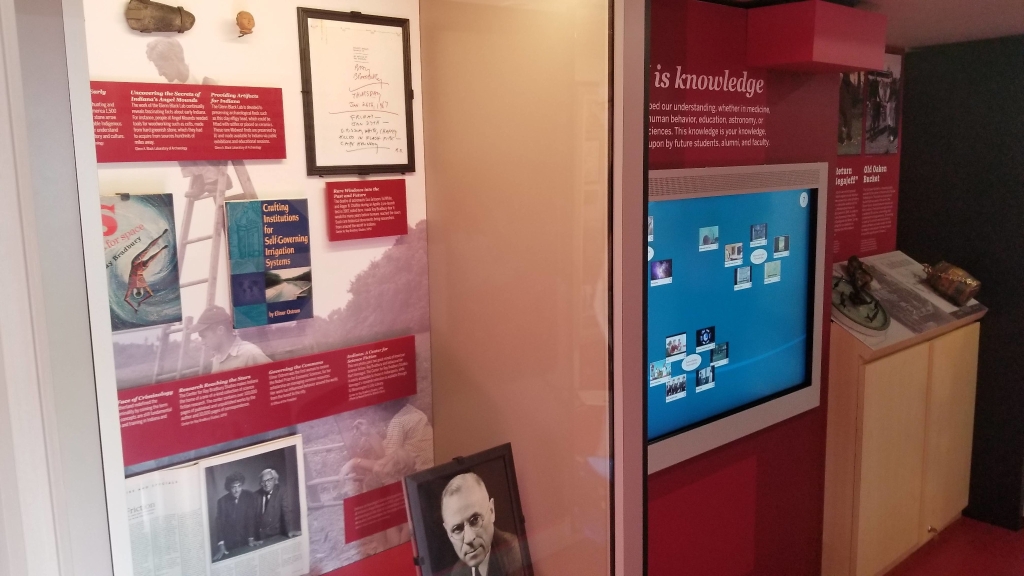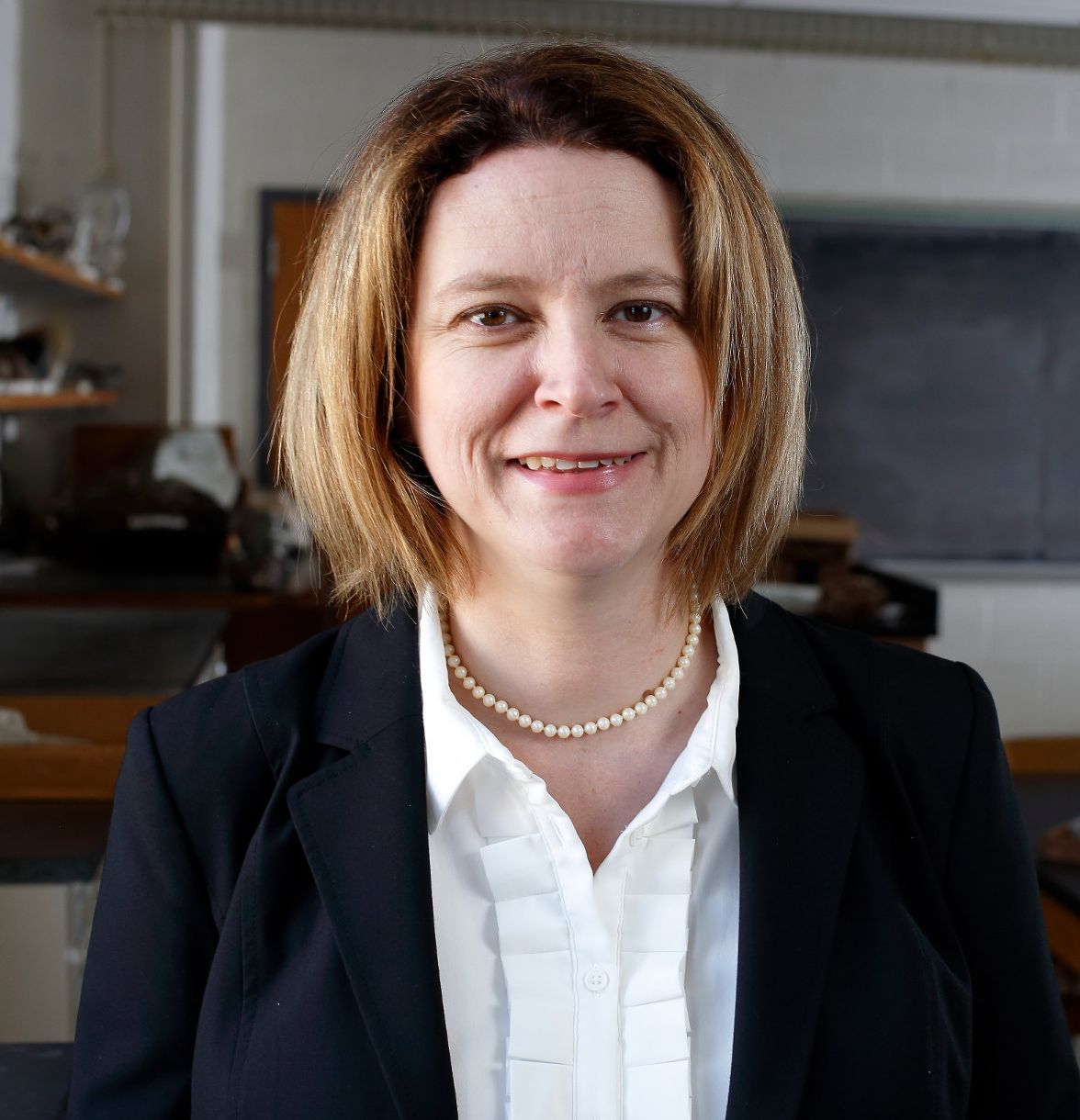
(BLOOMINGTON) – Indiana University has revealed its first University Collections Strategic Plan to guide the care, preservation, and use of more than 220 collections of material objects entrusted to IU, such as those in the Lilly Library of Rare Books, the Eskenazi Museum of Art and the Kinsey Institute.
For the past two centuries, IU has accumulated unique and irreplaceable material of enormous value. Though not always thought of in these terms, collections such as these can be among a university’s most valuable resources. Recognizing this, President Michael A. McRobbie presented a call to action in his 2017 State of the University address to establish a University Collections initiative.
To lead this strategic initiative, Heather Calloway was hired as the inaugural leader of University Collections following a national search during summer 2018.
Calloway hit the ground running. In her first 14 months on the job, she and her colleagues worked to:
- Identify all of the collections housed at Indiana University (222, up from the 50 originally identified).
- Meet with all of the collections managers across the university.
- Establish a collections advisory council.
- Identify security and other protection issues affecting IU’s most significant collections.
- Begin the process of valuing IU’s most significant collections.
- Plan and implement a traveling collection in celebration of the IU Bicentennial.
- Address urgent issues with specific collections.
- Establish the office and hire two additional staff members.
- Craft and garner approval of the University Collections Strategic Plan.
Sharing the charted course
The University Collections Strategic Plan will enhance the stewardship of all of IU’s collections, both large and small, and to ensure that all collections are accessible to the entire university, the public, and scholars throughout the world.

Throughout the next three years, IU Collections will create university-wide guidelines for collections management and care, and they will work with collections managers as needed throughout the university to address needs for storage, environmental control and risk management. This will include creating a template for assessing these issues and offering training for collection staff in these areas.
University Collections also will increase the digital presence of all of IU’s collections by maintaining and expanding the IU Collections website. They will also work with collection managers to ensure each collection has a dedicated web page that provides information such as collections description, mission statement and contact information, as well as digital access to key holdings of each collection. A more robust digital presence will not only expand access for the public but also help increase the use of collections in research and teaching.
“The more than 200 collections amassed by Indiana University are nothing short of spectacular,” Calloway said. “We have a responsibility to art, culture, history, science and to the citizens of Indiana and the world to do all that we can do to document all artifacts, preserve them with the best tools available, and share them here and around the world. That is our mission and a mission we are excited to see through.”
A larger sustained effort
The creation of University Collections is part of a larger sustained effort McRobbie has launched to ensure IU’s collections are properly housed, maintained, used and curated. That effort began with the launch of the Media Digitization and Preservation Initiative in 2013, which has resulted in the digitization of about 325,000 of IU’s most valuable audio and video objects and the ongoing digitization of 25,000 of the most important films in IU’s internationally renowned film collection.
Other major collections-related initiatives have included:
- Completing the Auxiliary Library Facility 3 storage facility, known as ALF-3, where many of IU’s most precious collections are stored in a climate-controlled, secure facility.
- Completing the extensive renovations of the Eskenazi Museum of Art, supported by the generosity of Sid and Lois Eskenazi.
- Renovating the Lilly Library of Rare Books and Manuscripts, supported by the generosity of Lilly Endowment Inc.
- Establishing a new IU Museum of Archaeology and Anthropology from the existing collections of the Glenn A. Black Laboratory of Archaeology and the Mathers Museum of World Cultures, as well as completely renovating and remodeling the building in which they are housed, supported by the state of Indiana and private donors.
- Establishing a new Collections, Teaching, Research, and Exhibition Center, to be housed in the historic McCalla School building, which is being completely renovated, supported by the state of Indiana.
- Renovating the Geology Building, which houses the Department of Earth and Atmospheric Sciences and its collections, as well as developing new facilities for the Indiana Geological and Water Survey, which together are home to more than 75 collections on the Bloomington campus, supported by the state of Indiana.
- Renovating the Anderson Library and Calumet Regional Archives at IU Northwest, which houses the history of Indiana’s Lake and Porter counties.
“President McRobbie’s clear and ambitious vision for University Collections has led to extraordinary progress in a very short time,” Cate said. “New and renovated facilities, substantial new external support, a new office of University Collections and one of the largest university-led digitization efforts in the nation have all resulted from that vision. As a result, the university’s rich collections, and the knowledge they hold are better protected, more widely known and easier to access than ever before.”
Moving forward
The university continues to deliver on the president’s commitment to better stewardship and enhanced accessibility of its collections. These include many significant art, cultural and historical collections, but also a vast array of unique specimens that are part of IU’s natural science collections, from astronomy to zooarchaeology.
“Great universities are known for their great collections,” Calloway said. “As we celebrate IU’s Bicentennial Year, we look forward to continuing to showcase some of the world’s most extraordinary and irreplaceable materials held right here in Indiana. Whether its film, music, paintings, sculpture, oral and written histories, or plants, the university is committed to preserving the treasures we hold and making them available for researchers to utilize and the community to enjoy.”
Information – News at IU – April Toler is assistant director of communications in the Office of the Vice President for Research.




